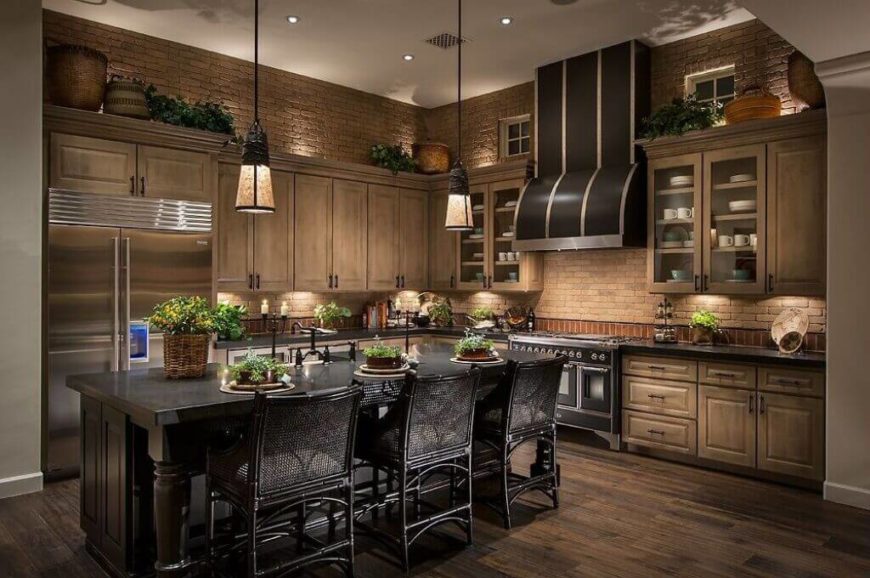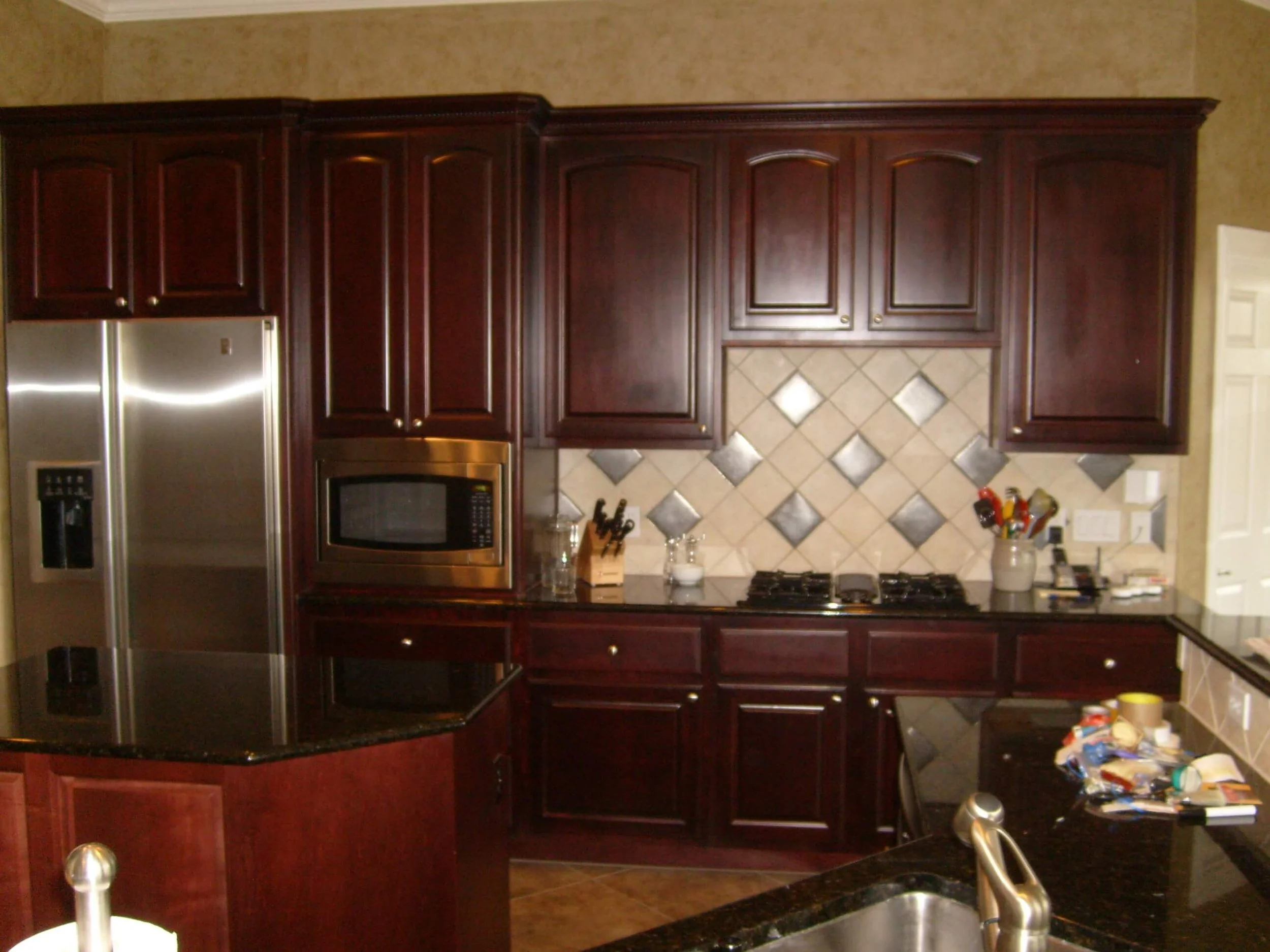The Evolution of Kitchen Cabinet Styles
Kitchen cabinets, the backbone of any kitchen, have undergone a fascinating evolution in terms of style and design. From the functional and practical to the modern and sleek, kitchen cabinets have mirrored the changing tastes and preferences of homeowners throughout history. The rise and fall of dark wood cabinets is a testament to this dynamic evolution.
The Rise and Fall of Dark Wood Cabinets
Dark wood cabinets have enjoyed periods of immense popularity, particularly in the mid-20th century. They were often associated with traditional and classic kitchen designs, evoking a sense of warmth, richness, and sophistication.
- Mid-Century Modern: During the mid-century modern era (1950s-1960s), dark wood cabinets were a staple, often paired with sleek countertops and minimalist hardware. This style emphasized clean lines, functionality, and a focus on natural materials.
- Traditional Style: Dark wood cabinets continued to be popular in traditional kitchen designs throughout the 1970s and 1980s. These kitchens often featured ornate details, decorative moldings, and a more elaborate aesthetic.
However, the popularity of dark wood cabinets began to decline in the late 20th century and early 21st century. This shift was influenced by several factors, including:
- The Rise of Lighter and Brighter Spaces: Contemporary design preferences began to favor lighter and brighter kitchen spaces, with an emphasis on openness, airiness, and natural light. White and light-colored cabinets became increasingly popular, creating a sense of spaciousness and modernity.
- The Influence of Minimalism: The rise of minimalism in interior design also contributed to the decline of dark wood cabinets. Minimalist kitchens prioritize clean lines, simplicity, and functionality, often opting for lighter colors and streamlined designs.
- The Desire for Versatility: Homeowners increasingly sought kitchens that could adapt to changing trends and personal styles. Lighter cabinets offered greater versatility, allowing for easier updates and redecorating.
The Pros and Cons of Dark Wood Cabinets: Are Dark Wood Kitchen Cabinets Out Of Style

Dark wood kitchen cabinets have a timeless appeal and can add a touch of sophistication to any kitchen. They’re known for their rich color and natural beauty, offering a unique visual contrast to lighter countertops and backsplashes. However, there are both advantages and disadvantages to consider when deciding if dark wood cabinets are the right choice for your kitchen.
Advantages of Dark Wood Cabinets
Dark wood cabinets offer several advantages that can enhance the look and feel of your kitchen. They can:
- Create a Warm and Inviting Atmosphere: The rich tones of dark wood can make a kitchen feel cozy and welcoming. This is especially true in kitchens with natural light, where the dark wood can absorb the light and create a warm glow.
- Add a Touch of Elegance: Dark wood cabinets are often associated with luxury and sophistication. They can make a kitchen feel more formal and upscale, especially when paired with high-end appliances and fixtures.
- Hide Fingerprints and Smudges: Dark wood cabinets are less likely to show fingerprints and smudges than lighter cabinets. This can be a significant advantage for busy families who want to keep their kitchen looking its best.
Disadvantages of Dark Wood Cabinets
While dark wood cabinets offer several benefits, they also have some potential drawbacks to consider. These include:
- Make a Space Feel Smaller: Dark wood can absorb light, making a small kitchen feel even smaller. This is because dark colors tend to recede visually, making the space appear less expansive.
- Limit Design Flexibility: Dark wood cabinets can be more challenging to work with when designing a kitchen. They can be overpowering and may clash with certain color schemes or design styles.
- Highlight Imperfections: Dark wood can accentuate imperfections in the cabinets, such as scratches or dents. This can be a concern for homeowners who want their kitchen to look its best.
Practicality of Dark Wood Cabinets, Are dark wood kitchen cabinets out of style
The practicality of dark wood cabinets depends on several factors, including the type of wood, the finish, and the level of maintenance required.
- Maintenance: Dark wood cabinets require regular cleaning to prevent dust and dirt from accumulating. They may also need to be polished or waxed periodically to maintain their shine.
- Stain Resistance: Dark wood can be more susceptible to stains than lighter wood. This is because the dark color can make stains more visible.
- Durability: Some dark wood species, such as cherry or walnut, are known for their durability. However, others, such as mahogany, can be more prone to scratches and dents.
Alternative Kitchen Cabinet Styles and Materials

While dark wood cabinets have been a popular choice for many years, they are not the only option available. Modern trends have shifted towards lighter, brighter, and more versatile cabinet styles and materials.
Are dark wood kitchen cabinets out of style – These alternatives offer a fresh perspective on kitchen design, allowing for greater flexibility in achieving a desired aesthetic. By exploring these options, homeowners can create kitchens that are both stylish and functional, reflecting their personal preferences and lifestyle.
White Cabinets
White cabinets have become increasingly popular in recent years due to their versatility and ability to create a clean, modern look. White reflects light, making spaces appear larger and brighter. This is especially beneficial in smaller kitchens, where natural light may be limited.
White cabinets also serve as a neutral backdrop for a wide range of colors and textures. They can be paired with colorful countertops, backsplashes, and accessories to create a vibrant and dynamic space. Additionally, white cabinets can be easily updated with new hardware or paint to keep the kitchen feeling fresh and current.
Gray Cabinets
Gray cabinets offer a sophisticated and timeless alternative to white. They provide a sense of calm and tranquility, while still offering versatility in terms of color pairings. Gray can range from light to dark, allowing homeowners to choose a shade that complements their existing décor and personal style.
Gray cabinets pair well with both warm and cool tones, making them a versatile choice for a variety of kitchen styles. They can be combined with stainless steel appliances, natural wood accents, or colorful accents to create a cohesive and stylish design.
Light Wood Cabinets
Light wood cabinets, such as maple, birch, or oak, offer a warm and inviting aesthetic. They bring a touch of nature into the kitchen, creating a cozy and comfortable atmosphere. Light wood cabinets can be stained or painted to achieve a variety of finishes, allowing for customization to match individual preferences.
Light wood cabinets pair well with natural materials, such as stone countertops and wood flooring. They can also be incorporated into traditional or modern kitchen designs, adding a touch of warmth and sophistication.
While dark wood kitchen cabinets might seem like a classic choice, they can sometimes feel dated. If you’re looking for a more modern and sophisticated look, consider embracing the trend of gray kitchens with dark cabinets. This pairing offers a sleek and elegant aesthetic that’s both timeless and on-trend, proving that dark cabinets can still be a stylish choice in the right setting.
While dark wood kitchen cabinets might be considered a bit dated by some, don’t write them off entirely! If you’re looking for a more modern take on the classic look, consider incorporating dark taupe kitchen cabinets. They offer a similar depth and richness but with a softer, more contemporary feel, allowing you to embrace the timeless elegance of dark tones without sacrificing a modern edge.
